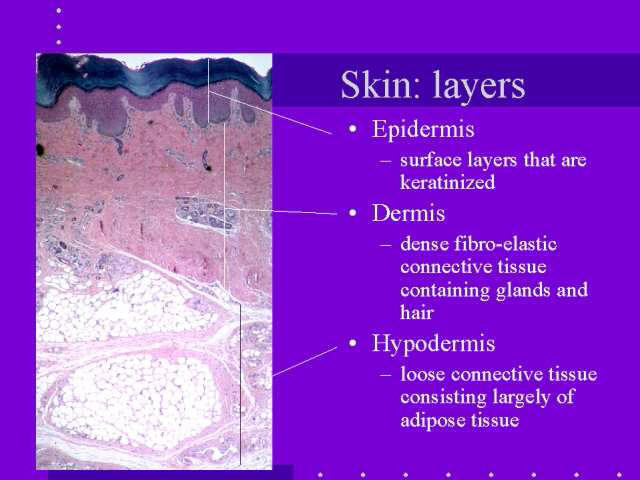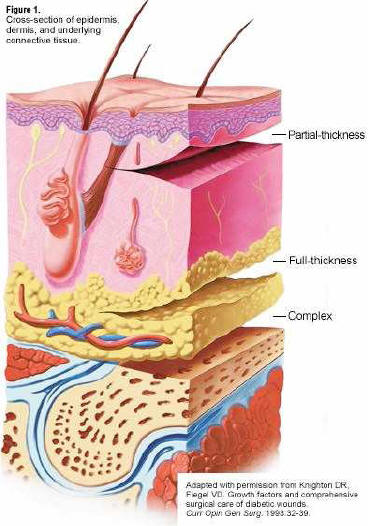
|
Tissue Engineered Skin: Apligraf® Skin Physiology.  
Figure 1. Figure 2. As can be seen from figure 1 and 2, skin is made of 3 layers: (1) the epidermis, keritanized surface layer, the uppermost layer of the epidermis is the stratum corneum, (2) dermis, fibroelastic layer made of connective tissue and containing glands and hair, (3) and the hypodermis (hypo = below), loose fatty, adipose connective tissue. Skin is the heaviest organ with approximately 16% of the body weight and it covers 1.2 - 2.3 m2 area. The functions of the skin include: protection of physical, biological, UV light, dehydration regulation of body temperature, sensory, synthesis of vitamin D with UV absorption. 1st Degree burns result in loss of only the epidermis and regeneration can occur on its own. 2nd degree regeneration consists of total epidermal and partial dermal loss. 3rd degree burns involve complete loss of epidermis and dermis. Second and third degree burns cannot heal properly on their own and contribute to scarring. |